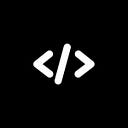Understanding the basics of building LLM Applications in LangChain
LangChain is a framework designed to simplify the development of LLM applications powered by Large Language Models (LLMs). It provides a simple interface to interact with pre-trained LLMs from various providers like OpenAI, HuggingFace, and others. Harrison Chase launched Langchain in October 2022 as an open-source project.
Want to learn setting up LangChain with Hugging Face in Node JS, check out here : https://codeymaze.com/setup-langchain-huggingface-nodejs/
Use Cases of LangChain
LangChain is used across many industries and applications. Some common use cases include Chatbots, Summarization Tools, Data Parsing and Conversion, Question Answering Systems, and automated Content Creation.
Key Concepts in LangChain
- Memory — Memory is an important concept in LangChain. It enables LLMs to store & access past information. This is helpful in a chatbot application where memory allows the model to remember past conversations making future interactions meaningful.
- Large Language Models (LLMs) — LLMs are at the heart of LangChain. These models are trained on large amounts of text and can understand and generate human-like text based on the inputs received. LangChain provides an interface to connect with LLMs from leading providers like HuggingFace & OpenAI.
- Output Parsers — Output parsers transform raw outputs LLM generates into structured data such as JSON or dictionaries. This is useful when the output needs to be further processed, analyzed, or displayed in a specific format.
- Chains — Chains in LangChain are sequences of components that allow developers to build complex workflows by linking multiple tasks together.
- Agents — Agents in LangChain are autonomous entities that can interact with external tools, make decisions, and execute actions based on the data they receive. These agents are designed to handle more dynamic and complex tasks.
Check out the complete article here : https://codeymaze.com/basics-of-building-llm-applications-langchain/
